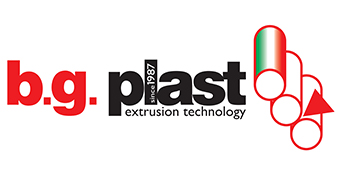 Extrusion Lines for Hollow Profiles
Extrusion Lines for Hollow Profiles
Extrusion lines for hollow profiles are specialized manufacturing processes used to create hollow plastic, which are widely used in industries such as construction, automotive, and furniture. The process involves forcing material through a die to create a continuous shape with a hollow cross-section.
Key Components of Extrusion Lines for Hollow Profiles :
- Extruder : The main machine where the raw material (usually in pellet) is melted and pushed through a die.
- Die : A special device that shapes the material into the desired hollow profile. The design of the die determines the shape and size of the hollow profile.
- Calibration Unit : Ensures the hollow profile maintains its shape and size as it cools.
- Cooling System : Often water or air-based, this system cools the extruded profile to solidify it.
- Puller Unit : Draws the extruded profile away from the die at a controlled speed, ensuring consistent thickness and quality.
- Cutting Unit : Cuts the continuous profile into desired lengths.
- Stacker or Collection System : Collects the finished profiles for packaging or further processing.
Advantages of Extrusion lines for Hollow Profiles:
Extrusion lines for hollow profiles offer several advantages in manufacturing, particularly for creating lighter products. Here are some key benefits:
- Versatility in Design :
- Complex Shapes: Extrusion allows for the production of complex hollow profiles with varying wall thicknesses, cross-sectional shapes, and internal features.
- Material Variety: Hollow profiles can be extruded from PP or PC materials and composites, allowing for customized solutions based on specific application requirements.
- Efficiency in Production :
- Continuous Process: Extrusion is a very efficient method for large-scale production since it is a continuous process that can create continuous lengths of hollow profiles.
- High Throughput: Extrusion lines are capable of producing high volumes of hollow profiles quickly, reducing production time and costs.
- Cost-Effectiveness :
- Material Savings: The ability to control wall thickness and profile geometry precisely leads to material savings, reducing waste and overall production costs.
- Consistency and Quality :
- Uniformity: The extrusion process ensures consistent wall thickness and dimensional accuracy throughout the entire length of the hollow profile, leading to high-quality end products.
- Surface Finish: Extruded profiles typically have a smooth surface finish, which may reduce the need for additional finishing processes.
- Scalability :
- Adaptability: Extrusion lines can be easily scaled up or down depending on production needs, making them suitable for both small batches and large production runs.
- Customization: The process allows for easy adjustments in terms of profile dimensions and material formulation, facilitating rapid prototyping and customization.
- Environmental Benefits :
- Recyclability: Materials used in extrusion, particularly plastics, are often recyclable. Waste materials from the process can be reprocessed, reducing environmental impact.
- Energy Efficiency: Modern extrusion lines are designed to be energy-efficient, contributing to lower operational costs and reduced carbon footprint.
- Application Flexibility :
- Broad Range of Applications: Hollow profiles produced through extrusion are used in various industries, including construction, automotive, medical, and consumer goods, due to their strength, lightweight properties, and durability.
